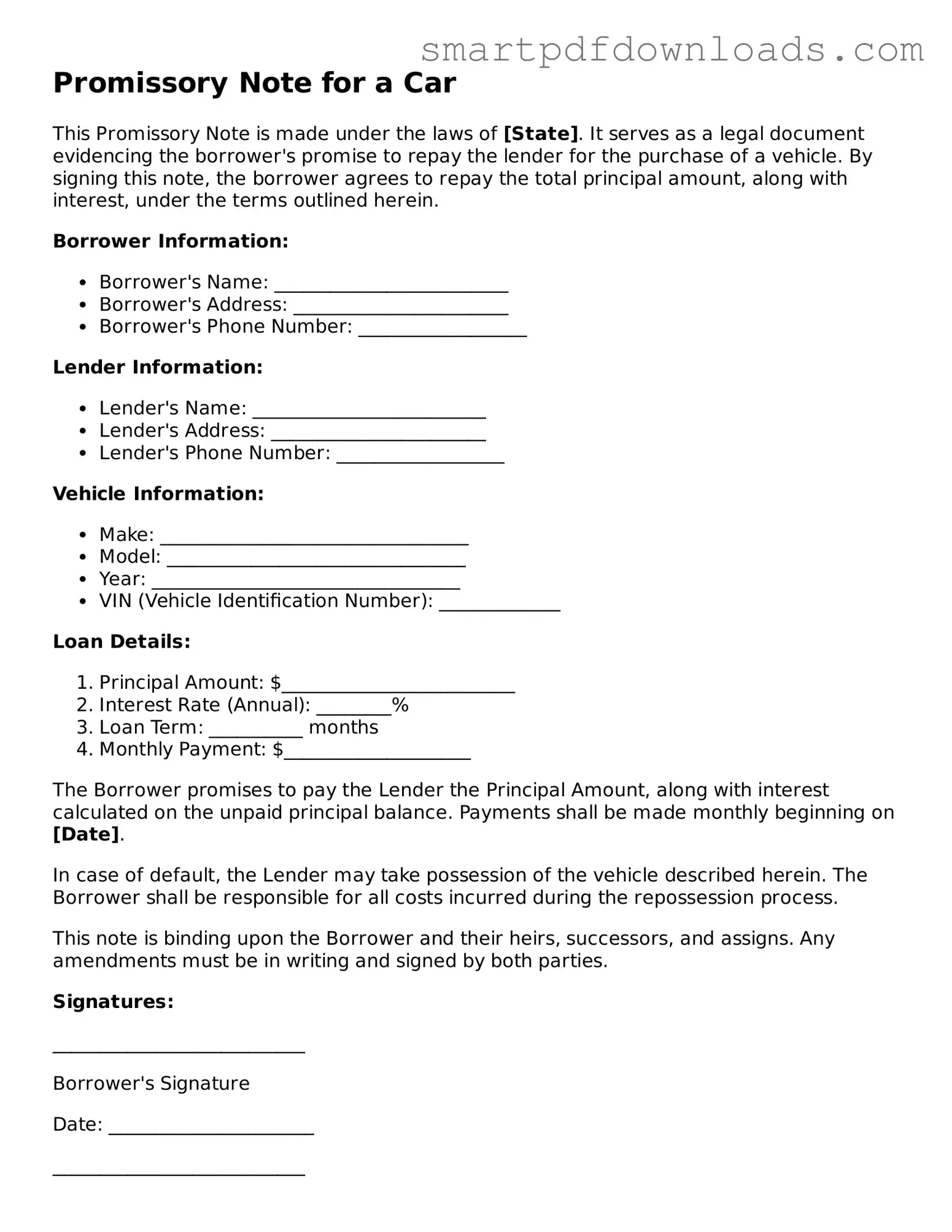Promissory Note for a Car
This Promissory Note is made under the laws of [State]. It serves as a legal document evidencing the borrower's promise to repay the lender for the purchase of a vehicle. By signing this note, the borrower agrees to repay the total principal amount, along with interest, under the terms outlined herein.
Borrower Information:
- Borrower's Name: _________________________
- Borrower's Address: _______________________
- Borrower's Phone Number: __________________
Lender Information:
- Lender's Name: _________________________
- Lender's Address: _______________________
- Lender's Phone Number: __________________
Vehicle Information:
- Make: _________________________________
- Model: ________________________________
- Year: _________________________________
- VIN (Vehicle Identification Number): _____________
Loan Details:
- Principal Amount: $_________________________
- Interest Rate (Annual): ________%
- Loan Term: __________ months
- Monthly Payment: $____________________
The Borrower promises to pay the Lender the Principal Amount, along with interest calculated on the unpaid principal balance. Payments shall be made monthly beginning on [Date].
In case of default, the Lender may take possession of the vehicle described herein. The Borrower shall be responsible for all costs incurred during the repossession process.
This note is binding upon the Borrower and their heirs, successors, and assigns. Any amendments must be in writing and signed by both parties.
Signatures:
___________________________
Borrower's Signature
Date: ______________________
___________________________
Lender's Signature
Date: ______________________
